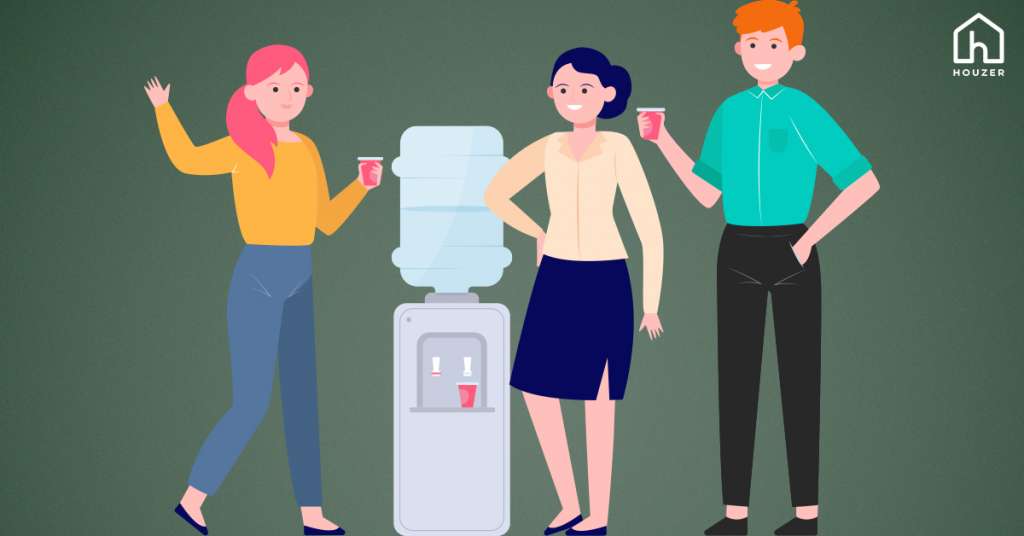From Rooftops to Recharge Pits: Exploring
Different Water Harvesting Techniques for
Cooperative Housing
Most societies in Mumbai face the same problem almost year-round: water scarcity. However, a society that has contributed to the city in many ways, today we are going to cover an important society. As with many other cooperative housing societies, they were provided with limited water supply everyday and had to order water tanker supply continuously. This is how they eliminated that cycle with water harvesting.
Studying the Case of a Mumbai CHS and Their Way to
Freedom from Tankers

The Problem:
Their main problem lay in their lack of regular water supply. They received water only for a
limited time – 2 times a day. This amount of water was never enough to meet the needs of the
residents. This also meant many homeowners had to put water storage tanks into their own
homes. In addition to the water storage, they would frequently call for water tankers to make
up for the shortfall of water. This turned out to be an incredibly expensive ordeal for society.
The Solution:
To combat this water crisis, a number of alternatives were suggested, and all came back to
implementing various forms of water harvesting techniques. This society used a combination
of two of the most popular rainwater harvesting system designs – rooftop rainwater
harvesting and surface runoff harvesting. They contacted a group of professionals who helped
them assess their options and choose the solutions most easily implemented for their location
and building infrastructure.
The Outcome:
Adding these methods of rainwater harvesting helped this community to reduce their reliance
on water tankers. It also improved the quality of the water available to them. Additionally, it
provides a sustainable water source to the residents that replenishes with rain.
After analysing this case study and many such cases, we know more confidently that these
techniques work, but how do they work? Let’s see your options.

The Various Harvesting Techniques
Rooftop Rainwater Harvesting:
One of the most commonly implemented methods for housing societies is the rooftop
harvesting technique. This uses a series of pipes and gutters to collect and store rainwater
collected on the rooftop of the building. This water is then diverted using PVC gutters to a
water tank or artificial recharge system underground, where it can be purified for later use.
Direct Use Storage:
When water collected from the rooftops is directly taken to a rainwater storage tank for
usage, it’s referred to as direct use. The water tank here must be designed with the amount of
rainfall, intensity, and availability kept in mind. This water is usually not the most potable but
can be used to clean and maintain common areas and for uses like car washing and
gardening.
Borewell Recharge:
Water collection from the rooftop rainwater harvesting system is directed towards bore wells
to recharge what are known as deep aquifers. This method helps ensure that your
groundwater is recharged.
Recharge Pits:
These are smaller pits built on the ground that recharge shallow aquifers of water. These can
work well for smaller buildings and bungalows that don’t have very high requirements. These
recharge pits are multilayered to help slowly collect and even filter debris out of the water.
This is another method of ensuring groundwater recharge.
Dug Well Recharge:
If your property already has an existing dug well, then the rooftop water can be directed to
this well to recharge it. The water is directed here after it has run through a filtration bed.
Surface Runoff Water Harvesting:
This is different from rooftop harvesting, which involves collecting rainwater from
catchments and other areas on your property where rainwater gathers or flows through and
redirects it for usage.
Things to Keep in Mind:
When it comes to rainwater harvesting, the quality of the water matters as much as the
quantity.
To maintain the quality of water, you can make sure the following things are adhered to –
- Rooftops should be cleaned and regularly checked for debris. If there are any
contaminants here, the water collected cannot be safely used. - Rooftops should not be painted as paint affects the potability of water.
- All pipes, PVC gutters, and storage tanks used should be properly installed, regularly
checked and maintained.

The Benefits of Water Harvesting
Adopting one or multiple of these rainwater harvesting techniques will have several
advantages for your housing society.
1. Money Savings:
As illustrated by the case study of rainwater harvesting above, using these methods will help
you reduce the amount of water your society needs overall. This means a reduction in your
water bill as well as the cost savings from a reduction in the need for water tankers.
2. Cleaner Water:
The water from these water tankers is known to be poor-quality hard water, often taken and
supplied without sufficient filtration. With a rainwater collection system, you are in control of
the water’s filtration, which ensures much cleaner water.
3. Replenishes the Groundwater:
By using these techniques to refill aquifers, you can help replenish the groundwater levels at
your location. This also enables you to use things like storage tanks and borewells almost all
year round.
4. Encourages Responsible Use:
By taking the matter into your own hands, you can ensure the water you do already use is
handled more responsibly. Having a system like this can also help educate residents on water
management and conservation.
All in all, water harvesting needs to be a prominent part of any future plans for your housing
society because of the many advantages that it gives you. Regardless of which method you
decide to go for, the benefits far outweigh any difficulties you might face. Water is essential,
and finding a way to be independent of your water needs is just as precious.
[…] season, and there’s no betterway to beat it than by taking a refreshing plunge into the cool waters of the swimming poolwithin your society. It is also a convenient and luxurious amenity for the […]